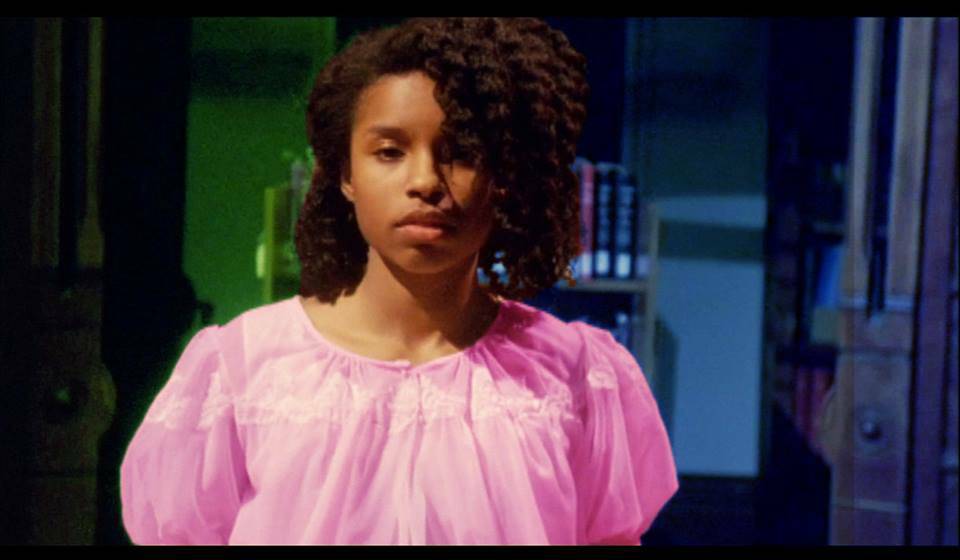Concordia graduates featured at MIBFF talk about the inspiration behind their films
At the Montreal International Black Film Festival (MIBFF) last week, I had the opportunity to speak with Concordia graduates Evangeline Kabuya and Irene Angelico. Both are producers of amazing but entirely different films exploring aspects of black identity and culture.
After graduating from the communications program in 2016, Kabuya created Poussière (Dust), a short silent film inspired by her experience working in a library.
Q: Can you to talk me through the events that take place in the movie and why you directed it that way?
A: I was inspired by the works of Maya Deren, especially her piece At Land (1944). I think the similarities between my short and hers are obvious, like how the protagonist seemed to move seamlessly from location to location. I like the absurdity of it, how you cannot help but feel involved in the storyline.
Now, when people watch Dust, they label it as experimental even though [that] was not my intention. The way I see it, there is a strong narrative line, nothing is unsure about it. Dust came to me in fragments. I stitched [the ideas] together almost randomly.
Q: What do you hope people take away from your work?
A: My goal is to create narratives that include black women. I want people to see us. Once they do, I want them to develop their own understanding of it. I want them to make the meaning of the work their own.
I believe that as soon as someone sees my work, it’s taken from me. The meaning of it is not mine to decide anymore. When each one of us tries to understand a movie, we all come with our own baggage. It’s impossible to read a work the exact same way as another person, and I think that’s the beauty of art in general.
How does Dust reflect your learning experiences at Concordia? Is Dust an expressed product of your knowledge or an independent exploration?
Dust is an exploration of my creativity. Of course my studies at Concordia had a great impact on it. Thanks to my film teacher at the time, Emily Pelstring, who was more into experimental works, we got to study more unique and less tradition materials.
As my first film, Dust is a product of multiple mistakes. It was shot in 16 mm through an analog medium and, at the time, I didn’t know if it was going to be good or bad. I just followed my gut. And it was the most rewarding experience.
*****
Angelico’s film, Reaching for Zion follows Bob Marley’s granddaughter, Donisha Prendergast, as she traces the foundation of her grandfather’s legacy, exploring the “untold story of Rastas and Jews.”
Q: How did you come to make films with a BA in humanities of science, (now known as human relations)?
A: I co-directed my very first film with George Mihalka in a humanities of science class at Concordia. I was sick of writing papers, and I convinced George that this would be great. We had no idea if it would even be accepted. It wasn’t a sexy title—something about a young woman in a modern technological age—but it was an OK film. And we both got an A+.
Q: What was your creative process behind Reaching for Zion? How does it relate to the overall theme of MIBFF, “Speak Up!”?
A: Reaching for Zion, like all my films—in fact why I am a filmmaker at all—is all about speaking up.
Most of my films are about battling racism, poverty and religious hatred. These are my obsessions. I believe that everyone deserves a home where they can live in peace and harmony.
Like so many others, I am a huge fan of Marley’s music and of his dream of “One Love,” which embodies all these values. When I met Donisha Prendergast, Marley’s granddaughter, I was inspired by her efforts to realize that dream in our present day struggles.
In exploring all this, I became fascinated by Rastafari’s connection to Judaism. Rastas and Jews share beliefs about Yahweh/Jah, Old Testament redemption, the mystical properties of human hair, dietary practices and symbols like the Star of David and Lion of Judah. Both also share a history of slavery and persecution.
Donisha has dreamt of the African Queen Sheba since she was a girl. The Queen of Sheba’s intellectual and spiritual connection with King Solomon, son of King David, evolved into one of the most legendary romances in history. Donisha believes Haile Selassie, the former Emperor of Ethiopia (1930-1974), was a direct descendant of them.
Q: How would you describe your experience as a white producer/director of black culture?
A: We consider it a great honour for our whole team to be included in the Montreal International Black Film Festival. I am not sure I have the right to be a producer/director of black culture, and I’m not. I am looking at the commonalities of my culture as a white woman, a Jewish woman and a child of Holocaust survivors and what we have in common with Rastafari culture.
Like Donisha and all the Rastafari I have met, I believe that we can live in peace and harmony, and we don’t need to make distinctions based on colour, religion, class or anything else. There are differences, and that is wonderful. But we are also all one.
The Montreal International Black Film Festival ended on Oct. 1 with a screening of Woodpeckers at Concordia. For more information about the festival, visit the MIBFF website.
